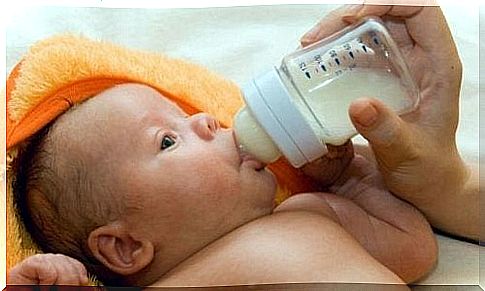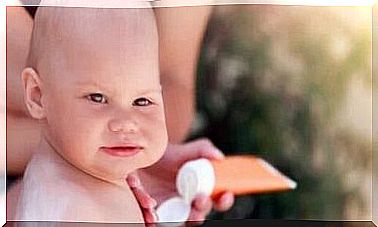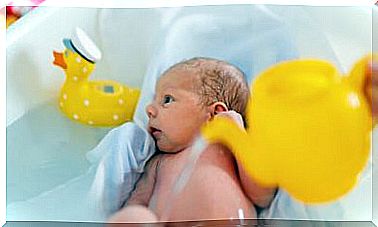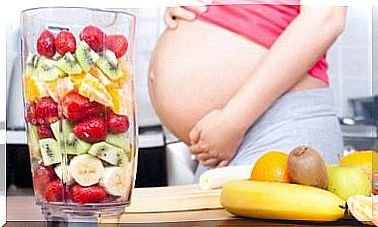What Is Gastroesophageal Reflux In Babies?

All children suddenly expel some liquid through their mouth or sometimes vomit. However, when the return of food is permanent, it can be something else. In these cases, it is common to speak of a disease resulting from gastroesophageal reflux in babies, called GERD.
The possibility of the existence of GER is especially considered if the reflux is constant and lasts from 12 to 14 months. Of course, this needn’t worry us, but we have to think about effective remedies. Next, we’ll learn more about it.
Know the origin of gastroesophageal reflux in babies
The esophagus is the channel that allows food to pass from the mouth to the stomach. In it, there is a muscle called the lower esophageal sphincter that, like a valve, facilitates the movement of food.
When functioning normally, the sphincter relaxes and this is what allows the passage of food. However, in some babies, this muscle may not be fully developed and therefore affect the esophagus. Result: the baby regurgitates breast milk or formula.
Basically, GER occurs due to lack of esophageal sphincter control. In the case of affected children, the sphincter relaxes and stretches erratically. Everything is resolved when the development of that little muscle is complete.
GERD symptoms in babies
Vomiting and reflux are the most notorious symptoms of this temporary medical condition. However, there are also other signs that a baby affected by gastroesophageal reflux has.
A very particular one is the arching of the back during the act of eating. Babies with this condition tend to throw their heads back when they are fed. In addition, some problems with swallowing are also present.

Other symptoms are coughing, repetitive cramps and minor breathing complications. Furthermore, affected children tend to refuse food, so they may experience some weight loss.
GERD diagnosis
There are several medical tests to diagnose gastroesophageal reflux in babies. Of course, the only way to confirm this condition is to see a pediatrician. These are the three exams that exist:
- Monitoring esophageal pH: This test measures the amount of acid in a child’s esophagus. The level of this substance is higher in children with GERD. For the measurement, a tube is inserted under medical supervision.
- Upper gastrointestinal series: It consists of mixing a contrast liquid with the milk from the bottle. The child takes it and then the doctor takes some x-rays to look at the shape of the upper gastrointestinal tract.
- Upper Digestive Endoscopy: In this case, an endoscope is used with a camera that is inserted into the child’s tract. The idea is for the doctor to see the shape of the muscle. In addition, it is possible to take a tissue sample (biopsy).
The best treatment is special care.
Gastroesophageal reflux in babies requires greater care in the way they are fed. The first thing to do is help your child to expel gas more often. Not just after eating, but during the process.
After meals, it is advisable to place the baby in an upright position. You will need to maintain this position for half an hour after each ingestion.
Some doctors promote the use of products like rice cereals. The idea is to mix them with milk in the bottle. There are also experts who choose to change the formula of this food.
Also, there are some medications that the pediatrician can prescribe if needed. An example are H2 blockers and proton pump inhibitors. Both treatments help to lower the level of acid in your stomach.

a small recurring evil
Only 10% of babies develop problems due to lack of development in the lower esophageal sphincter. In most cases, this condition is overcome without further complications. Only a very small margin of affected people should undergo surgery.
Mothers should look out for all signs and consult a trusted pediatrician when necessary. This professional will be the only one able to diagnose this condition with certainty in the little one. So, it’s up to us to be more careful when feeding the affected babies.









